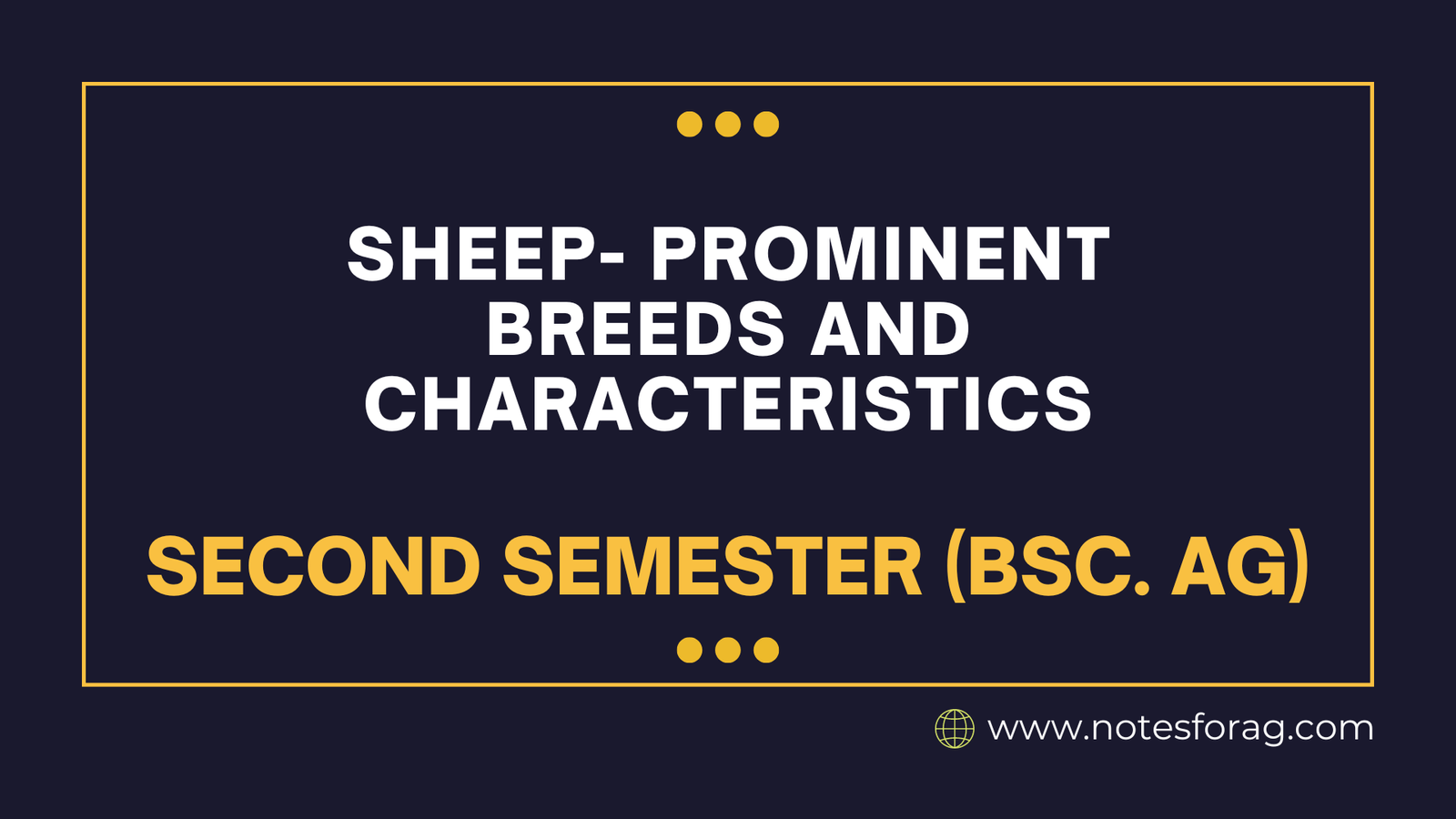Sheep are adaptable animals that are kept for their wool, milk, and meat (lamb and mutton), with different breeds being better at different things. Renowned wool breeds with fine, superior fleece, such as Rambouillet and Merino, are highly valued. Hampshire and Suffolk are two popular meat breeds that are prized for their excellent meat quality and quick growth. While dairy breeds like East Friesian excel in milk yield, dual-purpose breeds like Dorset produce good meat and wool. Because of its distinctive qualities, each breed is a valued asset in many agricultural systems across the world.
Table of Contents
Introduction to Sheep Breeds
Sheep are adaptable animals that are kept for their wool, milk, and meat (lamb and mutton), with different breeds being better at different things. Renowned wool breeds with fine, superior fleece, such as Rambouillet and Merino, are highly valued. Hampshire and Suffolk are two popular meat breeds that are prized for their excellent meat quality and quick growth. While dairy breeds like East Friesian excel in milk yield, dual-purpose breeds like Dorset produce good meat and wool. Because of its distinctive qualities, each breed is a valued asset in many agricultural systems across the world.
Prominent Breeds and Characteristics
Sheep are versatile animals raised for wool, meat, and milk, with various breeds excelling in specific areas. Here are some of the most notable sheep breeds and their key characteristics:
1. Merino

- Origin: Spain
- Appearance: White with fine, dense wool.
- Characteristics: Renowned for producing the finest and softest wool. They are hardy and adaptable, often used in crossbreeding to improve wool quality.
- Primary Use: Wool production.
2. Suffolk
- Origin: England
- Appearance: Black face and legs with a white body, large frame.
- Characteristics: Known for rapid growth and high-quality meat. Popular in commercial meat production due to their excellent carcass characteristics.
- Primary Use: Meat production.
3. Hampshire
- Origin: England
- Appearance: Black face and legs, robust body.
- Characteristics: Valued for fast growth and high-quality meat. They also produce good wool.
- Primary Use: Meat production.
4. Dorset

- Origin: England
- Appearance: White face and body, medium-sized.
- Characteristics: Dual-purpose breed known for both good meat and wool production. Prolific breeders that can lamb more than once a year.
- Primary Use: Dual-purpose (meat and wool).
5. Rambouillet
- Origin: France
- Appearance: White with a dense, fine fleece.
- Characteristics: Descended from the Merino, producing high-quality wool and good meat. Hardy and adaptable.
- Primary Use: Wool and meat production.
6. Lincoln
- Origin: England
- Appearance: Large size, long, lustrous wool.
- Characteristics: Produces some of the longest and heaviest fleeces. Hardy and well-suited for various climates.
- Primary Use: Wool production.
7. East Friesian

- Origin: Germany/Netherlands
- Appearance: White with a bare face and tail, medium-sized.
- Characteristics: Leading dairy breed with high milk yield. Known for prolificacy and good mothering abilities.
- Primary Use: Milk production.
8. Romney
- Origin: England
- Appearance: White with a long, lustrous fleece, medium to large size.
- Characteristics: High-quality wool and resistance to foot rot. Good meat producers and adaptable to wet conditions.
- Primary Use: Wool and meat production.
9. Cheviot
- Origin: Scotland/England
- Appearance: White face with no wool on the head and legs, erect ears.
- Characteristics: Hardy and adaptable, known for easy lambing and good meat quality. Moderate quality wool used for various products.
- Primary Use: Meat production.
10. Karakul
- Origin: Central Asia
- Appearance: Diverse colors, long-bodied, distinctive fat-tailed.
- Characteristics: Known for unique pelts, especially from young lambs (called “Persian lamb”). Also used for meat and wool, adaptable to harsh climates.
- Primary Use: Pelt production, meat, and wool.
These breeds are vital for a variety of agricultural purposes because they provide a multitude of important attributes, such as prolific milk production, high-quality meat and wool, and environmental adaptability.
Frequently Asked Question(FAQ)
What are the main breeds of sheep known for high-quality wool production?
The primary breeds Lincoln, Rambouillet, and Merino are recognized for producing wool of superior quality. Merino is known for making the softest and best wool, and Rambouillet is known for its superior wool and versatility. Long, glossy fleeces are a distinguishing feature of Lincoln sheep.
Which sheep breeds are best suited for meat production?
The Suffolk, Hampshire, and Cheviot breeds are the most suitable for producing meat. While Cheviot sheep are resilient and produce high-quality meat, Suffolk and Hampshire breeds are renowned for their quick growth and superior carcass quality.
Related Articles

